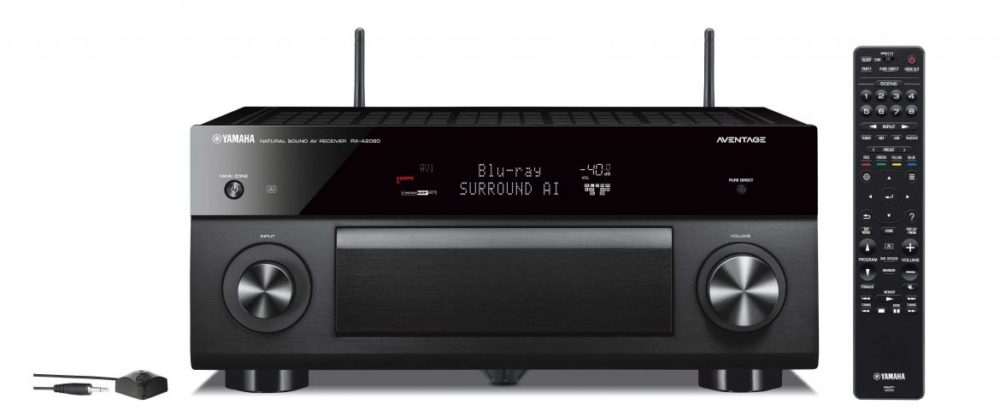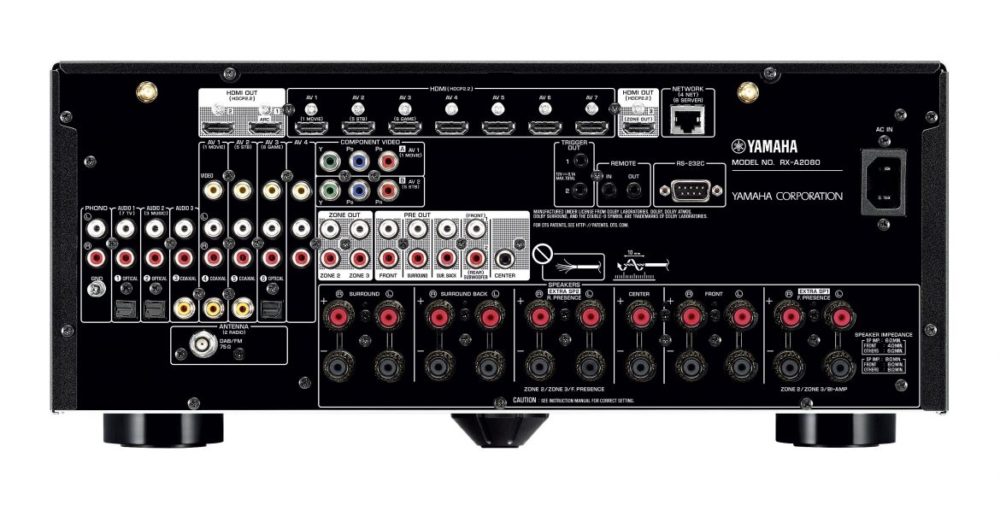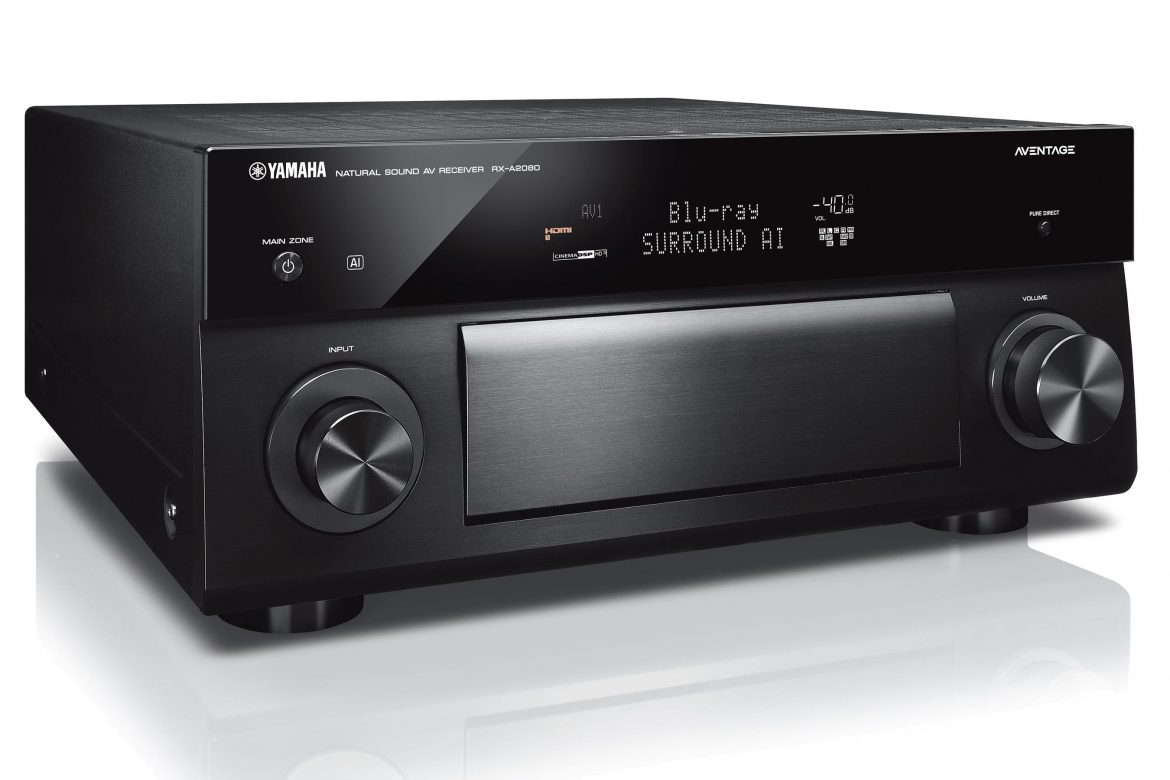TL;DR
Curious about what makes a home theater truly sing? The Yamaha AVENTAGE RX-A2080 is a premium surround sound amplifier that punches above its weight, delivering a powerful, warm, and detailed audio experience that rivals more expensive competitors. It boasts impressive features like 9.1 channel processing, HDR support, and an intriguing Surround: AI mode that can enhance even older audio sources. While it might be a significant investment and lacks front HDMI input and full Auro 3D support, its expansive soundstage and refined audio quality make it a standout choice for immersive movie nights and gaming. Discover why this amplifier has become our new reference component and if it's the upgrade your home theater needs.
It’s a curious observation that some of the world’s highest-valued companies are American, while some of the most exceptional products originate from Japan. Here at Senses, we utilize the Panasonic FZ800 as our reference OLED display and the Audio-Technica ATH-MBx50BT headphones as our benchmark in the wireless mid-price range, as of 2019. However, the core of any home theater system is its sound, and that’s where the Yamaha AVENTAGE RX-A2080 excels. This versatile amplifier offers substantial capabilities, delivering impressive audio performance without requiring an exorbitant investment.

AVENTAGE represents Yamaha’s premium product line. Home theater amplifiers, or more accurately, surround amplifiers, can be broadly categorized into three price/performance tiers. The first is the highly competitive and budget-friendly entry-level, typically ranging from 4,000 to 6,000 SEK. This segment features a wide array of manufacturers, including Sony, Onkyo, Pioneer, and Yamaha themselves, all offering considerable value. However, these models generally lack the power amplifier quality, power output, and resolution found in the higher tiers. Next is the mid-price range, encompassing amplifiers priced around 9,000 to 12,000 SEK, where Denon and Marantz are popular options. Finally, the high-end segment features amplifiers in the 15,000 to 18,000 SEK range. Here, audio quality significantly improves, with brands offering enhanced timbre, higher power, and superior electronics and components, including power amplifier class. The AVENTAGE A2080 falls into this category, priced at approximately 17,000 SEK at the time of this review, and stands as Yamaha’s second most powerful amplifier in the Aventage series. The flagship A3080 offers more channels and power but carries a premium of around 10,000 SEK.
Specifications
Compared to Yamaha’s smaller amplifiers, the A2080’s distinguishing characteristic is its size. It’s notably larger and heavier, but remains manageable at 17 kg. Key features include a 9.1 channel processor, support for all major HDR formats (Dolby Vision, HDR10, HLG), a power output of 140W (8 ohms, two-channel stereo), compatibility with the latest home theater audio formats (Dolby Atmos and DTS:X, but excluding Neural:X and Auro 3D, which necessitate at least 11.1 channels, available on the A3080), and a 32 bit / 384 kHz DA converter.
A notable addition this year is Yamaha’s Surround: AI mode. While not employing true machine learning-based AI, it analyzes audio in real-time by sampling it several times per minute and comparing it to a reference database. This process aims to enhance both modern and legacy audio tracks, potentially improving PCM 2.0 sources or adding further refinement to newer formats. While we typically advise against digital signal manipulation, we found this feature effective in specific scenarios, such as older video games lacking true 5.1 audio and certain TV broadcasts. Although not intended for constant use, it’s a worthwhile feature to experiment with on a case-by-case basis to determine its impact on the listening experience.

The rear panel features seven HDMI inputs, all supporting HDCP 2.2, enabling full utilization of 4K devices with maximum chroma (4:4:4) and a 60 fps frame rate. While an eighth HDMI input on the front panel would be convenient, its absence is not a critical drawback.
Yamaha A2080 – Usage and Connection
Setting up the Yamaha A2080 is as user-friendly as expected, based on our experience with previous models. In our lab, we now use banana plugs on speaker cables, which significantly streamlines the connection process and minimizes the risk of short circuits. Experimenting with the placement of additional speakers (front/back presence) is recommended to optimize the effect of object-based audio formats such as Atmos and DTS:X. After the physical connections are established and tested, calibration is the next step. Yamaha includes an advanced microphone and stand for their YPAO (Yamaha Parametric Acoustic Optimizer) system. This auto-calibration system can now compensate for varying seating positions and heights, offering enhanced optimization capabilities. While we generally prefer a single, optimized sweet spot, the availability of this option is appreciated.
Operation is straightforward; the amplifier can easily display the active audio track by using the INFO button on the remote or front panel. This feature confirms Dolby Atmos playback, preventing confusion with Dolby True HD (which might occur due to speaker configuration issues). A new feature, “SCENES,” replaces the traditional INPUT buttons with eight presets for input source selection. However, SCENE settings cannot be adjusted directly within the menu; they must be configured before saving, with each input customized with the desired functions enabled or disabled. To save a connection and its settings, the corresponding scene number button must be held down. Any subsequent adjustments require re-saving the entire input. This approach is somewhat unconventional; ideally, parameters should be adjustable individually within a dedicated menu.
Yamaha A2080 – how good does it sound
The critical question: how does the Yamaha A2080 perform, considering its price? The answer is emphatic: exceptionally well. From the initial power-on, the amplifier’s potency and vibrancy are immediately apparent at familiar listening levels. The A2080 delivers a powerful, warm, and detailed sound, consistent with its specifications and power consumption (1200+ watts). Compared to other amplifiers in its price range, the Yamaha A2080 offers a notably expansive soundstage, impressive impact, and a refined level of detail across the frequency spectrum. Regardless of the source – high-resolution music via Tidal, CD audio through the UB9000‘s DAC, or game audio – the A2080 excels. Dolby Atmos on Xbox One X in titles like Gears of War 4 and various PS4 games with DTS produce an immersive experience, particularly when paired with a high-performance speaker system.

Even lower-quality audio, such as a TV6 broadcast via antenna, benefited from the Surround: AI mode. While not transformative, the Yamaha possesses the power, finesse, and engineering to deliver exceptional audio quality. The A2080 encourages revisiting music collections and favorite movies, reaffirming the crucial role of sound in the audiovisual experience.
Disadvantages of the A2080
Aside from its price slightly exceeding the 15,000 SEK threshold, the primary limitation is the 9.1 channel processor, which supports a maximum of 7.1.2 or 5.1.4 speaker configurations. While adequate for most users, this falls short of the 11.1 channels required for Auro 3D, a fully object-based audio format. An additional HDMI input on the front panel would also be a welcome addition. Future firmware updates may address minor issues, but overall, significant shortcomings are difficult to identify in this capable amplifier.
Yamaha AVENTAGE RX-A2080 – summary
The AVENTAGE RX-A2080 reinforces Yamaha’s established reputation in the audio domain. It delivers ample power, warmth, finesse, presence, and a soundstage that rivals competing products in and above its price class. While 17,000 SEK is a considerable investment, this amplifier offers longevity, supporting a comprehensive range of audio formats and features such as AirPlay, MusicCast, and Spotify Connect. It has become our new reference component, poised to deliver immersive action-packed soundtracks in Dolby Atmos and DTS:X, enhanced gaming experiences in multi-channel audio, and engaging stereo music and sports broadcasts.

